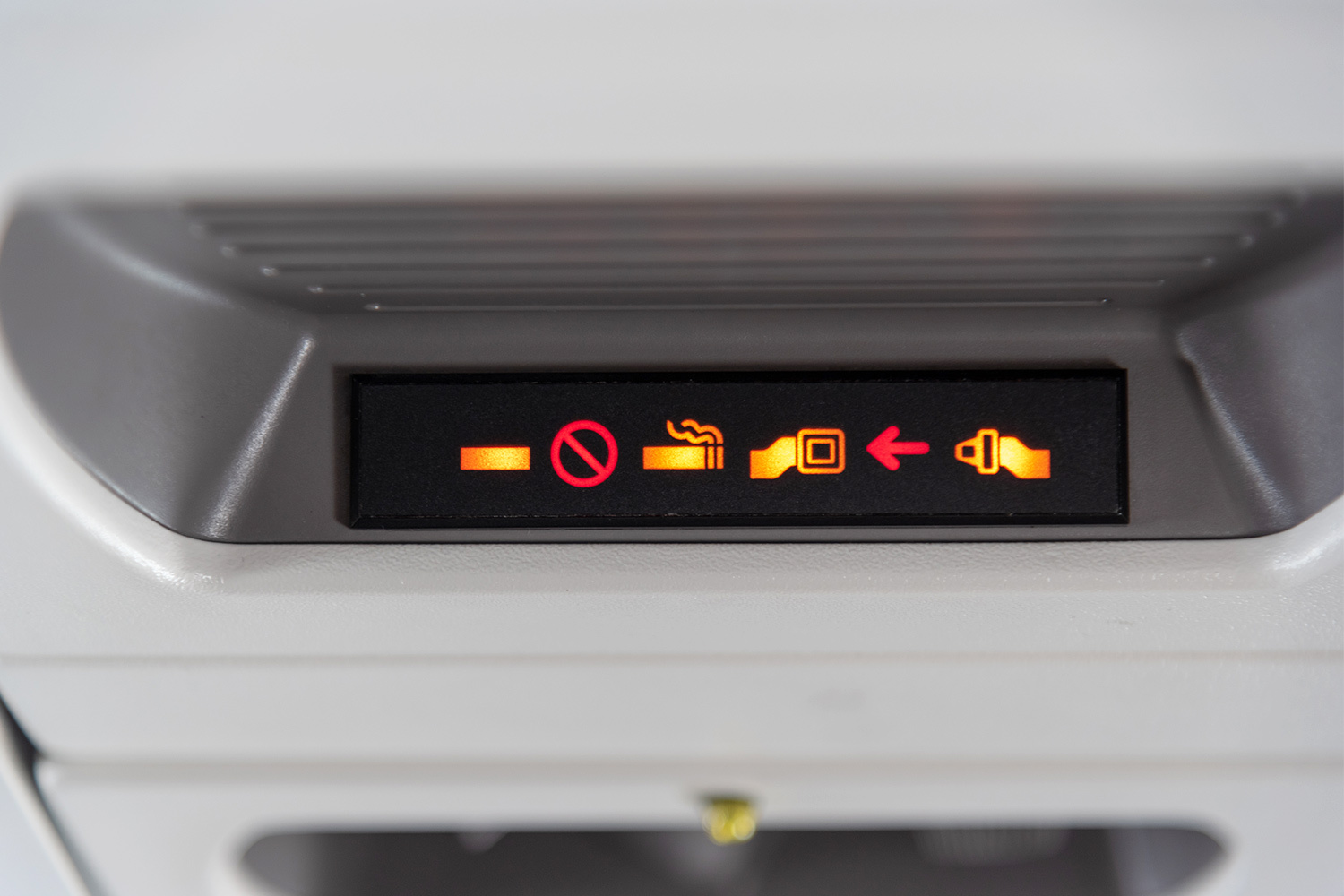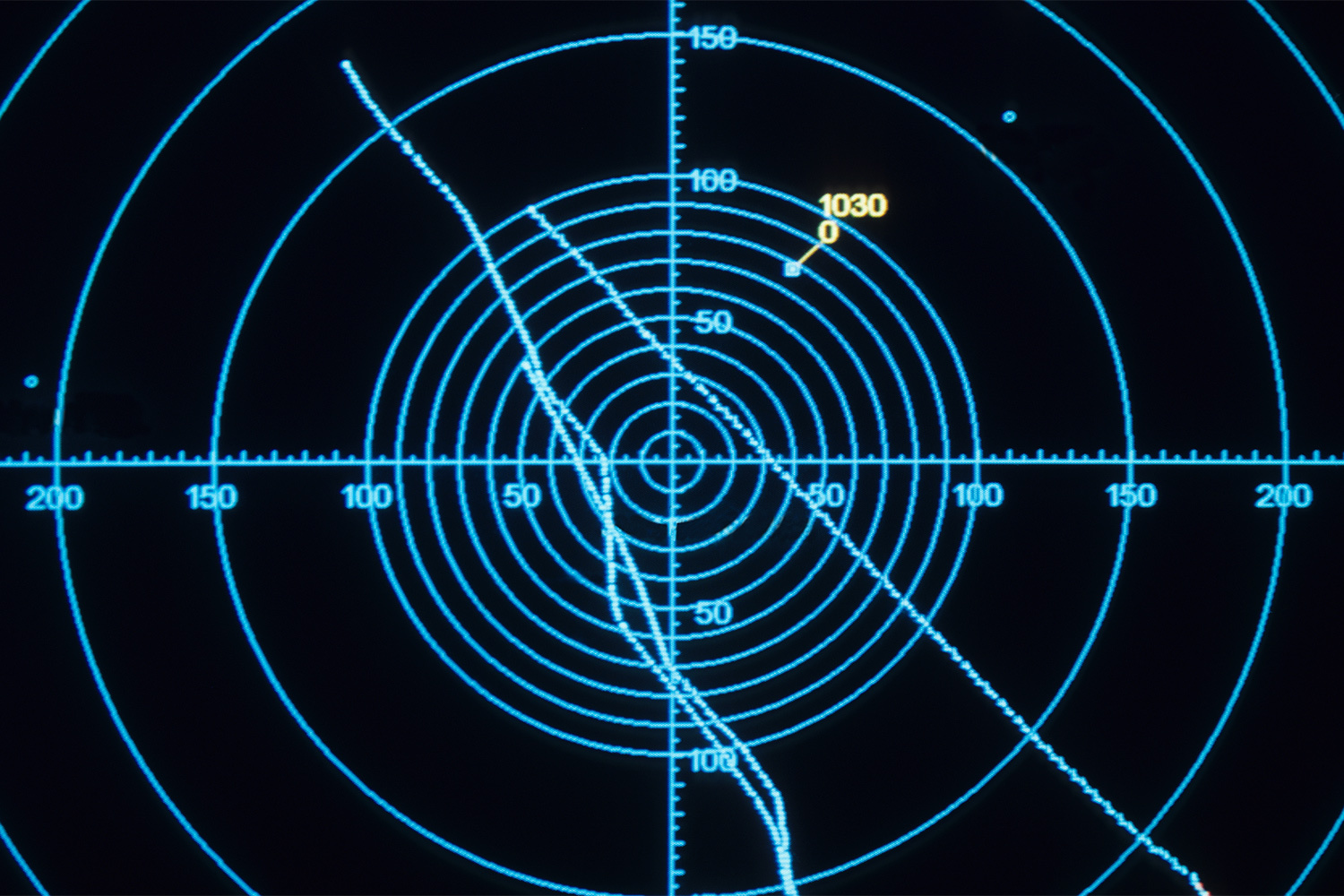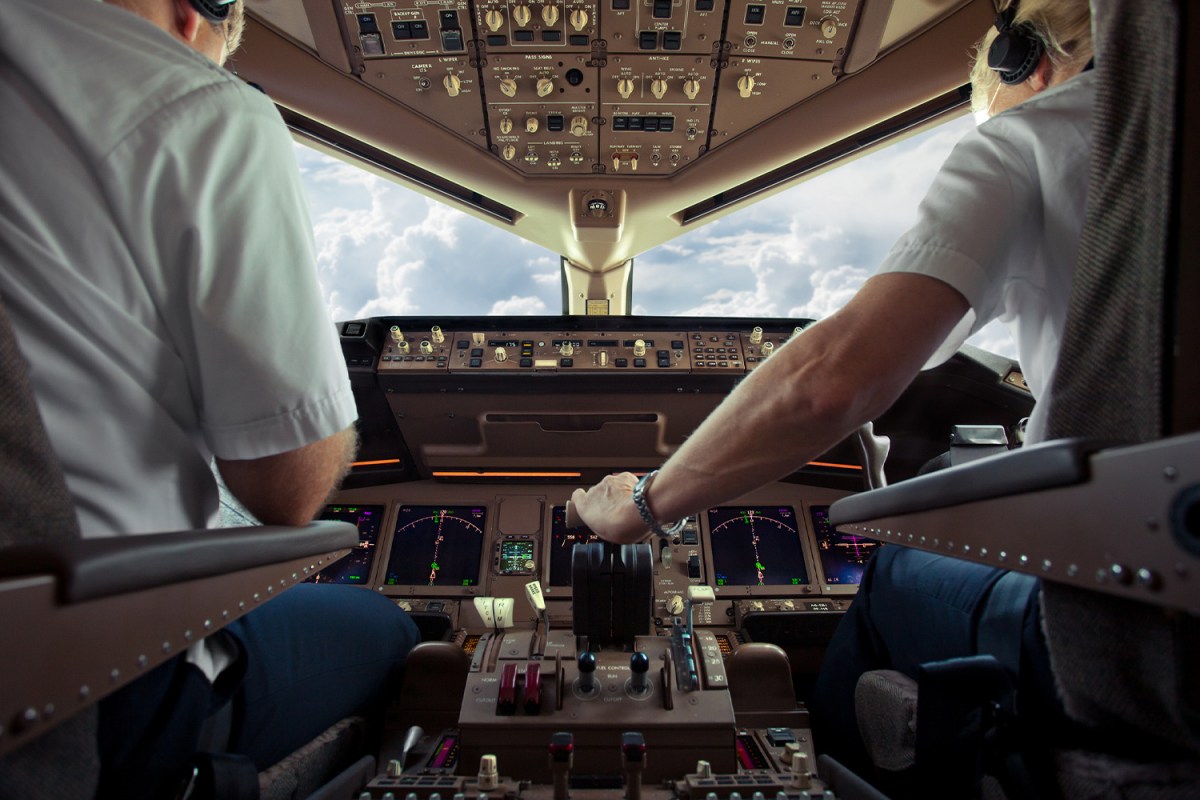Anyone who is scared of flying should not see Gerard Butler’s latest big movie release Plane. It contains perhaps the most harrowing depiction of airplane turbulence yet, with passengers thrown around like dolls and the aircraft flapping as though it were made of paper. This is what those in the aviation world call “extreme” turbulence. Yes, there is an official rating system: from light to moderate (when drinks start spilling), and from severe (when unsecured objects start getting tossed around) to extreme, the stuff of Gerard Butler movies.
It is also, thankfully, extremely rare, with severe turbulence affecting only some 5,500 flights in the U.S. each year, relative to 65,000 affected by the moderate kind that will have flight attendants firmly insisting you return to your seat.
Unfortunately, turbulence more generally — that sudden, unnerving onset of bumpiness and occasional lurching in your flight — is set to become more commonplace. According to studies at the University of Reading, U.K., global warming’s impact on the the troposphere has already increased the incidence of turbulence over the last four decades and will continue to increase it over coming decades.
Wind shear (the difference in wind speed or direction over a short distance) in the jet streams (those channels of faster moving air near the poles that airliners often use as their highways) has increased by 15% at airliner cruising altitudes since satellites began gathering the data in 1979. It is projected to increase by up to 29% by the end of the century.
Why so? “Because turbulence is, in effect, just chaotic air (akin to rapids in a river), in contrast to smooth-flowing ‘laminar flow’ air you ideally want. Greenhouse gases are warming the troposphere at a faster rate and, in turn, cooling the stratosphere — and the steeper the temperature gradient the more chaos you get,” explains Isabel Smith, a meteorologist on the turbulence study team at the University of Reading. “There have been studies suggesting this might happen in the past but because we’re dealing with such a hugely dynamic system in the atmosphere it has been hard to assess until now.”
It is a particular type of turbulence that is increasing, too. Much turbulence is predictable: it’s caused by strong winds pushed up off of mountain ranges. This so-called “mountain wave” is often the most dangerous kind of turbulence. By air pressure changes caused by cold or warm weather fronts, or by convective thunderstorms, these can, as recent research by Dr. Robert Sharman at the National Center of Atmospheric Research shows, have an effect on the smoothness of your flight from hundreds of miles away or more. There’s wake turbulence, too — caused by other big aircraft — which is why there’s typically a two-minute gap between takeoffs at the airport.
Thanks to greatly improved meteorological systems and the likes of in-flight radar, and a constantly updated grapevine of real-time if subjective reports by pilots, these kinds of turbulence are predictable and avoidable. You fly around it or lower or raise your altitude out of it. It’s the airline’s nefarious attempt to save fuel costs that has Gerard Butler fly his aircraft right through the middle of a thunderstorm in Plane. Avoiding turbulence is estimated to cost the U.S. airlines an extra $100 million each year and 160 million gallons of fuel — in itself not great for climate change.
But it’s what’s known as clear air turbulence that is more problematic: this rough air is no more dangerous than other kinds of turbulence, but it does come out of the blue. Since it doesn’t contain any water droplets it isn’t detectable through the means we have and, since it happens at too small a scale, it is hard to forecast by current predictive models. The Reading study suggests that clear air turbulence has been especially bad over the busy air space of North America — increasing by 41% over the last 40 or so years — and over the north Atlantic, where it has increased by 55%.

This matters not least because injuries caused by turbulence are real. Earlier this year, seven passengers on a Lufthansa flight from Texas to Frankfurt were hospitalized following severe turbulence over Tennessee. Though infrequent, these are still the most frequent kinds of injuries during flight — not because of critical damage to the aircraft, so much as passengers just not keeping their seatbelts on while seated as advised and consequently being thrown about inside the cabin.
The last time a passenger was killed by a turbulence-related injury was back in 1997 when severe turbulence hit a United Airlines flight over the Pacific Ocean. The passenger was not wearing their seatbelt and hit their head on the overhead luggage compartment. Typically it’s flight attendants who are most prone to injury just because they’re the last to get to their seats. To put all this in perspective, around 15 people are injured as a result of turbulence each year over the U.S., relative to the 2.5 million passengers who travel though its airports every day.
Yet the Reading study suggests that turbulence strong enough to pose an injury risk could double or triple in frequency. That is, if you’re not wearing your seatbelt. But Smith stresses that while flyers might experience more light turbulence, they’re unlikely to find themselves being buffeted by the stronger kind. “Most flyers are going to be impacted more by delays and by longer flights, as aircraft change course more often to avoid the turbulence,” she says. “And severe turbulence will still be an extremely rare event.”
Saying that, of course, may do little to soothe the jagged nerves of a passenger who flies because that’s the only option. How can their experience be improved? For one, sit as far forward in the plane as possible — turbulence feels worse at the back of the bus. In the midst of turbulence, another suggestion is to put a glass of water (best not use red wine here) on the tray table in front of you. This can serve as a dramatic demonstration of just how little the aircraft is actually moving erratically — much less than you might imagine. Consider too that air is constantly moving, and that contending with this movement is in a way the definition of flying, which is why pilots are unfazed, considering turbulence to be both normal and expected.
But, argues Jeremy Dempsey, flight director of California Aeronautical University, the real key to being more relaxed is education: understanding both turbulence and aircraft better. That, and keeping your seatbelt on, as he does whenever seated.
“Turbulence can be terrifying because it invites the fear of the unknown [for many passengers],” he says. “It’s precisely because most flights are smooth that turbulence catches you off guard. You take your cue from the reaction of the passengers around you rather than what is actually going on.”
He cites the sensation of the aircraft suddenly dropping hundreds of feet, when passengers are pinned to their seats and then momentarily experience zero gravity and an unpleasant lifting sensation in the stomach. “But that is just a moment, and actually it’s not hundreds of feet, but typically just a few, maybe tens of feet,” Dempsey stresses. “Or there is the idea maybe that the aircraft can’t take it. But while airliners can, if rarely, suffer structural damage in extreme turbulence, they are nonetheless built to withstand far greater turbulence than you might experience. After all, we send aircraft into the eyes of storms to collect data. That tells you all you need about aircraft strength.”
While Dempsey would like to see more reassurance about turbulence given to passengers in the pre-flight briefing — after all, passengers are enormously more likely to experience some turbulence on their flight than they are a crash — and others have called for all passengers, including young children, to have their own seat, technology that helps pilots avoid turbulence is improving all the time. And necessarily so, given that turbulence already costs the U.S. aviation industry upwards of $200 million a year, mostly in additional maintenance, sometimes in legal disputes with passengers who sue, claiming that pilots should have anticipated the rough air.
Can You Sue an Airline Over Turbulence?
A dozen passengers from a Hawaiian Airlines flight, which ended with 20 people going to the hospital, are about to find outThere is, for example, ongoing flight-test development of Boeing and the Japan Aerospace Exploration Agency’s LIDAR system — that’s Light Detection and Ranging — which uses ultraviolet laser radiation to analyze dust particles in the flight path, giving a picture of air density and thus seeing clear air turbulence coming, perhaps 15 miles or so away. The system has been considered too expensive and large to retrofit in aircraft, but it becomes a more approachable package with every iteration. A similar prototype system from the DLR German Aerospace Center measures a signal reflected from oxygen and nitrogen molecules. Other aircraft-mounted sensor systems are experimenting with transmitting turbulence data to a data center to provide other aircraft with a sense of what may be coming that’s more objective than pilot reporting. NASA has been testing a ground-based array of infrasonic microphones to detect turbulence up to 300 miles away.
In the meantime, Robert Sharman is working to develop what he calls “now-casting” — combining weather forecasts with in situ turbulence data from radar on around 1,000 airliners to fine-tune real-time predictions — which is then made available in a tablet-based tool already being used by pilots for carriers the likes of Air France and Qantas. The more data that could be plugged into this model’s algorithm over the coming years, the better it will function. Over the longer term, AI may help in all this.

But what will really improve our experience of turbulence is, he suggests, our understanding of it. And while that understanding is growing all the time, it’s still relatively naive. Indeed, fluid dynamics is one of the most complex topics in physics. The pioneering physicist Werner Heisenberg once said that if he was allowed to ask God two questions they would be: Why quantum mechanics? And why turbulence?
Turbulence, after all, is invisible but everywhere — from air to water to a crowd of moving people. Cities generate turbulence, as you do when you move. Turbulence is — by mixing up moisture, heat and gases — necessary to making our biosphere habitable. Turbulence makes rivers amble rather than gush by at many hundreds of miles per hour. One problem of electricity generation? The 10% or so lost to turbulence.
Understanding turbulence better would lead to more efficient aircraft and pipeline design, and energy generation though wind and tidal systems. But it’s all incalculably complex, almost inherently unpredictable and mysterious. If you’re into advanced physics, read up on the latest thinking on the collapse of the Kelvin-Helmholtz instability wave, the Navier-Stokes equations and the Reynolds number.
“Turbulence is random motions that are generated by numerous instability mechanisms, making it almost impossible to reproduce or forecast the motion and intensity of individual turbulent eddies,” explains Sharman. “So we’re relegated to study the statistics of turbulence, and this is much better understood. Very high-resolution computer simulations of fluid motion currently do a good job at reproducing observed overall turbulence behavior and statistics [but] for aviation applications these models can’t be used as they require extensive computational resources. Then there is the problem that the atmosphere supports waves generated by various sources which, similar to ocean waves, may break, also causing turbulence.”
In other words, turbulence causes more turbulence, and so on into ever greater atmospheric pandemonium. Yes, we have some way to go before aviation gets a better understanding of the genesis, nature and life cycles of turbulence. So until then, buckle up, kick back and remember that the wing is meant to flex. It’s all just some unruly air and will pass.
This article was featured in the InsideHook newsletter. Sign up now.

























